#dice mechanics
Explore tagged Tumblr posts
Text
Resolution Mechanics and You
Last post, I promised to talk about the dice mechanics in Prima Materia and why they exist the way they do. I also promised this would be a shorter post, so let's get this road on the show.
There were a few things I kept in mind when designing the resolution mechanics. Firstly, it had to involve dice, and a respectable amount of them. I enjoy rolling the click clack rocks quite a bit, and rolling more dice for me seems like a fun time. Secondly, it had to feel right. Feeling right is unfortunately very ambiguous, but I knew I wanted the dice system to feel like Attributes and Skills both mattered and contributed to a roll. I also wanted the system to be able to account for someone being abysmally bad at something, as well as very competent; with measurable steps along that path that feel distinct.
At the start, the only reference I really had was DND, so I researched different dice systems, what their pros and cons were, and branched out to play some other games. It's partially thanks to this that I got introduced to Star Wars D6, Warhammer Fantasy, and LANCER (excellent games, all of them).
After a month or so of this, I decided that no dice mechanics were up to snuff with the image in my mind of the dice system that struck the "correct balance." I didn't want to use a d20 system because there wouldn't be much variety in dice, and it's too swingy. I've never particularly liked d6 dice pools, partially because of the lack of dice variety. Other than that, I just don't subjectively like d6 dice pools in the games I've played that have them. d100 systems seemed interesting to me, but I felt they didn't allow for the kind of nuance I was looking for between the Attributes and Skills.
Regardless of whether or not my assumptions were correct, I decided to make my own dice system. Ironically, it turned out being fairly similar to d6 dice pools with a twist. This also ties in with how the Attributes and Skills work; but the simple version is that every roll comes down to what kind of dice you're rolling, and how many you're meant to roll. Attributes have a dice assigned to them; d4, d6, d8, d10, or d12; that represent how honed that attribute is. Skills have a number of pips that tell you how many dice to roll. For example, someone with a Vitality of d8 and endurance of 3 will roll three eight sided die when rolling endurance.
I think this system, if nothing else, is at least interesting. I'm in the process of playtesting to make sure it's actually fun to engage with and to see how much I need to tweak the math (particularly now that Character Creation mechanics exist), but so far it seems to be working nicely.
Thanks for reading, next time I'll post about some lore. I don't want to overload the blog with mechanics; the setting is just as important to this project (and I have art in the works for it!)
#indie ttrpg#indie rpg#original content#indie games#small content creator#rpg mechanics#dice mechanics#prima materia#primamateria
11 notes
·
View notes
Text
#and - due to prev - wondering what imploding dice are#like you roll a 1 and then#you have to subtract other dice from the pool?#lee help
Figured I should break this out for @tellmeayarn...
Okay, so, in the context of a Vampire-style dice pool, "exploding dice" are where you roll a result that both gives you a "success", but also lets you reroll the dice again (thus, giving you the possibility of more successes). So, like, you roll a bunch of d10s, and every dice that rolls 7 or higher counts as a "success", but if you roll a 10, then you get to keep that success and roll again.
Imploding dice in this system are an opposite concept. If you roll below the imploding threshold or lower, you not only subtract a success from your total, but you reroll again, potentially losing more successes.
To be clear, it's a terrible mechanic. Don't do this. but as a mathematical idea, it's pretty fun. Also, if you combine the two types of rolls, you start having to dabble in mathematical dark arts to figure out probabilities of specific scores, because, if your dice can implode and explode with no limit, then for any given score, there is literally an infinite number of combinations of dice that can give you that score, which messes up the usual way you'd figure out the probabilities...
2 notes
·
View notes
Text
Unified Core Mechanics
Hint: Having a bunch of core dice mechanics is counterintuitive and hard to master for all involved.
In the early days of Dungeons & Dragons, the core mechanics were something to be desired (some still cherish these earlier mechanics—see this fascinating article for more). These were the days of D&D’s non-unified core mechanics. Some classes required a d100 or percentile die to perform certain checks. The d20 was used for combat and checks, but there are more esoteric rules, tucked away in the earlier rulebooks, that required a d6 to be rolled to determine success or failure, something referred to in the above-linked article as the Rule of 2. This seems confusing to those of us who started with the third edition (and 3.5).
With each new edition of D&D, the esoteric and, if we’re honest, confusing rules were cut away, replacing them with something a bit more crunchy and uniform. It was the third edition, and the 3.5 edition, that unified the core mechanics within D&D. You rolled a d20 for almost everything. Other dice became secondary or tertiary to the almighty d20. The system became the d20 system, which was an impactful and business-savvy move by Wizards of the Coast in making the core mechanics of their cash-printing game more appealing to newer or even returning players.
While many folks despised the overemphasis on rules, procedures, and content bloat of the third edition, it was an important step in wrangling legacy roleplaying games like D&D. The unified approach made games like D&D less esoteric and easier to comprehend, especially if you were coming to the game a young teenager years ago, like myself.
Now, we have come to expect unified mechanics, even from the bigger names. Unified mechanics simplify the overall game, cut away the arcane, almost unusable rules, and make tabletop roleplaying a bit more approachable—although the designer in me wants to build a more manageable non-unified system: I look at early D&D rulebooks and decide against it.
#ttrpgs#game design#tabletop rpg design#tabletop roleplaying#dice#dice mechanics#unified mechanics#non-unified mechanics
0 notes
Text
idk who needs to hear this but there is currently an Armored Core 6 TTRPG in development and guess what. ITS NOT A D&D CLONE!!!!!!!!!

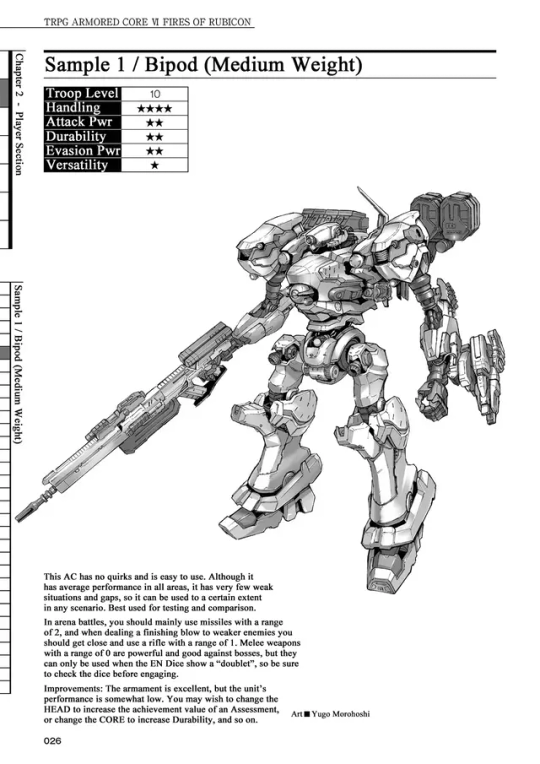
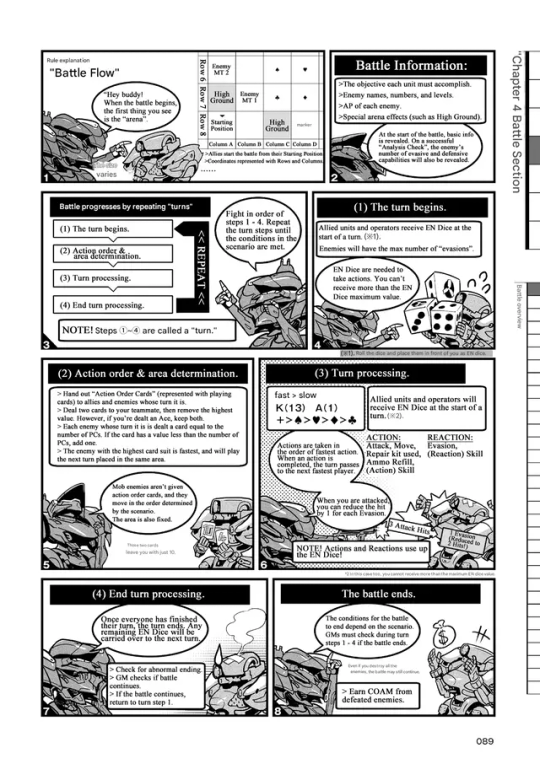

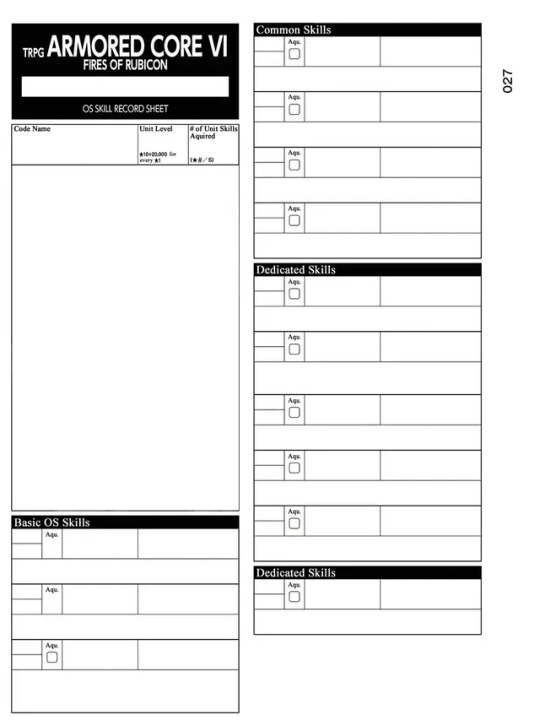
these were translated by bradydunawayart on reddit, though theres basically no information on the mechanics as of now and the only listings are on jp amazon so who knows if there will ever be an official translation but it looks really cool!
#i cannot even begin to tell you how fucking relieved i was when i saw that it wasnt going to be associated with wotc#and im very intrigued by the fact that it seems to use dice and cards idk of any other ttrpgs that do that off the top of my head#but LOOK at that character sheet. LOOK at those mechanics. IT HAS SUBSYSTEM DAMAGE!!!!! IM IN LOVE!!!!!!#random rambles#armored core#ttrpg
259 notes
·
View notes
Note
@thegeniusidiotnstickmerchant3728, which methods are "good" depends a lot on what you're trying to do. In general it's better to think about the kinds of results you're looking for and then pick a resolution mechanic to fit instead of picking a cool dice trick warping everything else to fit.
Good questions to ask are:
How much "space" do you need to differentiate characters with different skillsets? A game where the only difference is whether you're "trained" in Acrobatics or not is has different requirements than one that cares whether you're a Level 3 Thief or a Level 8 Thief.
Do you need a lot of granular circumstance modifiers for things like equipment or preparation? Games that do usually need an RNG with a wider range where each +1 is less impactful.
Does anyone ever (need to) get "off the RNG" from someone? Should there be contests of skill where the matchup is so lopsided that one side cannot lose? (Or equivalently, one cannot win?)
How common (or rare) should extreme results be? A natural twenty in D&D occurs on average once in a twenty rolls. Triple 6 on 3d6 happens less than one time in two hundred. This affects how often "beginner's luck" scenarios where someone with a low modifier beats someone with a high modifier occur.
If you've answers to those questions, there's a lot of resolution mechanics that support "high variance" results.
Rolling a flat 1d100 has a lot of variation because there's a lot of numbers you could roll. You can use a range of success mechanic to generate more possible successes based on how high the roll is.
Roll 3d6 with degree of success would have less variation, but make expertise more important for determining which degree of success a given character reaches.
Dicepool systems like counting how many 5s or 6s you have on Nd6 have a lot of variation, but tend toward the average. Extreme results like getting no hits or getting N hits becoming less likely as N increases.
Similarly counting arbitrary symbols on custom dice can have as much variation as you choose. The problems there are calculating the actual odds of success and mapping all those potential dice results into useful action resolution. What does it mean when your player rolles two successes, an Eye of Fate, and a botch on the same roll? Do you have to come up with something on the fly every time?
Using e.g. playing cards instead of dice can have a lot of variation because cards can have both a numerical value and a suit. Downside: now all your calculations for how likely things are to succeed require the hypergeometric calculator (unless cards can repeat and you're basically rolling a 1d13 x 1d4 lookup table under the hood).
Your specific scenario will help narrow things down a lot.
I'm currently working on an online fantasy interactive table-top inspired thing (@dungnsanddragns), and need to figure out a good way to count successes. You're definitely more experienced on this subject than I am, so I thought you might have a suggestion.
To be clear, I'm looking for something where the consequences of the results can have quite the bit of variation, but it doesn't need to be very fast to adjudicate.
Thanks in advance for your consideration.
Sorry, I'm not entirely sure what you mean, are you looking for a system to check if a die roll was successful? So something like a DC or counting successes?
#ttrpg#probablygoodrpgideas#dice mechanics#the shiny dice trick is fun but it is not the be-all end-all of game design#statistics are an important part of getting the results you actually want!
9 notes
·
View notes
Text










STIM - LAIKA
[ x x x - x 🌌 x - x x x ] - [ not requested! ] > custom requests: None!
#stim#stimboard#laika#space#galaxy#stars#trinkets#glitter#dice#mechanism#blue#black#rest in the stars baby girl......................
392 notes
·
View notes
Text


AND THEIR SAUCE????????
#this is vee speaking#I HATE SASARA ITS SO SICK WHENEVER HE OCCASIONALLY SHOWS HIS BDE AND IT SUCKS HE EVEN HAS IT LMAO#AND THAT SHIT HAD NOTHING ON HITOYA THEY LOOK SO COOL LOL#the showcase itself was interesting!!!!!! there’s a lot of elements at play and great lol!!!! it’s robust asf!!!!!!#but i feel like i was making A LOT of guesses at the mechanics lol#like the enemies i think are colour coordinated to their weaknesses so plan your card usage accordingly hence the next card feature#tho i was having a bit of a hard time telling which was which lol and i’m pretty sure the pale blue one is neutral#and therefore doesn’t have a weakness lol#the chance combo had me most confused lol i assume it has something to do with dice????#but like lol besides the chance combo thing what else was it doing????#i want to playyyyyy lol!!!!!! i want answers!!!!!!!!!! we still haven’t seen the abilities either lol just skills#which is neat btw!!!! skill within canon is just your ability to be able to rap and how well lol#but in hypdream there’s actual skills that raise/lower stats lol this is already fun#the chance combo thing made me giggle a little bit lol the way it was probably calculating the damage output so it to a minute to load#and sasara and dice looked awkward asf lol i wouldn’t have it any other way tbh hypmic brand jank lol 😌😌😌😌#c: sasara#c: hitoya
38 notes
·
View notes
Text
so, let's play a game...
(idk if i am gonna try anything tonight since my schedule is still very tight, BUT)
31 notes
·
View notes
Text
they knew i would be too powerful as a person into steampunk and minimalist clown makeup and so spawned me into the hottest most humid climate ever
#also i cannot stand any sensory heavy makeup anyway so maybe that’s just how the dice go#shitposting#i lovr you#the mechanisms#steam powered giraffe#no clowns to tag but i just see the cutest painted face makeups#alas i would wither and melt
23 notes
·
View notes
Text
Never Stop Blowing Up theories:
boy group battle-royale-to-the-death of all the boy groups
trench warfare, everyone's attacks are only bombs
everyone is bombs
gritty live action yellow submarine reboot set in the cold war
gritty bomberman reboot set in the american war
minesweeper meets minecraft meets chris angel mindfreak
chasing stardom in the post-zombie apocalypse
series of lightly themed keep talking and nobody explodes minigames
the only hope against the kaiju is untested size-shifting technology
the aliens invade from a planet with much higher atmospheric pressure
a day in the life of shakerston: the nightvale but for natural disasters instead of conspiracy theories
the oregon path: the unliscensed ill-advised game show. only on quibi
automotons from the clockwork/time bomb workshop find their way home
kids on bikes? nah volcanoes on surfboards
welcome yon traveler to balloon animal country where oxygen is expensive and balloon life is cheap
we can't be superheroes we're too busy being the best lawyer, detective, doctor, senator, spy, and journalist in the city respectively
madame millington's barely haunted manor for wayward rising nashville country starlets
prospector gold rush for the dragon's hoard
medical procedural following the onsite staff at the youtuber mansion
constant pc deaths, everyone has three backup characters minimum
lou dms (i the viewer am the one who blows up)
#d20#fhjy is dead long live umm something#never stop blowing up#dimension 20#dropout#kids on bikes would be a great system for this season regardless cause one of its mechanics is “exploding dice”#wayward nashville country starlets will be sung to the tune of tmnt
63 notes
·
View notes
Text
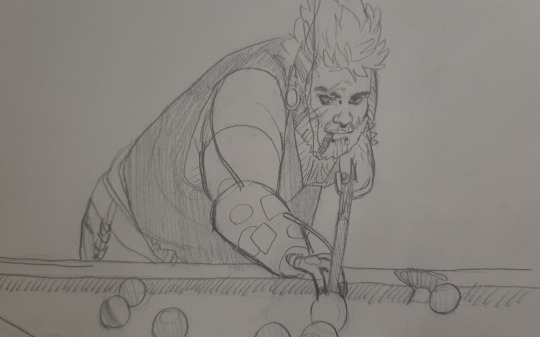
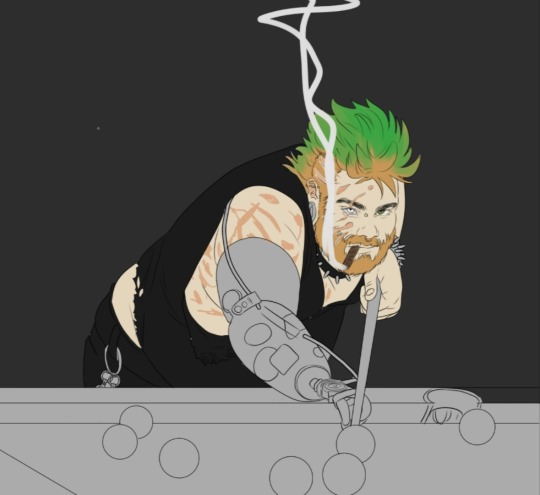
Krizzy WIP from a work sketch
#oc: krizzy o'kelly#krizzy facts:#he's part sídhe and has the power to load the dice in his favor by granting good or bad luck#he's incredibly laid-back and easygoing. hard to piss off unless you're really trying. patient and good-humored#he tells himself he wants to settle down and live the quiet life but he loves to gamble and try his luck#and loves adrenaline and high stakes#because he actually CAN lose it's just not common for him#somewhat nomadic. comfortable working with the mechanical and electrical (and plumbing if it comes to that).#can and will fix just about anything in your house for a cold beer or a sandwich. or just a kind word#surprisingly well-adjusted for someone whose parents left him at a carnival as a kid. maybe some abandonment and commitment issues#uses his luck abilities in his job as an edgerunner to have uncanny aim with handguns ARs and shotguns#if put in a Situation he can in fact push his luck far enough to spray and pray and have every bullet find its target#or dual wield pistols to the same effect#but the harder he pushes his luck to do ridiculous or borderline physics breaking things the higher the chance it'll blowback on him#so he doesn't show off with those moves on a normal basis#gives people in the neighborhood he's currently living in rides in his van when needed esp. wheelchair users#some of this i think I've said on here before but. again. i love him.
21 notes
·
View notes
Text









Sotha Sil
o.o.o||o.o.o||o.o.o
#the elder scrolls#sotha sil#stimboard#blue#white#gold#clockwork#astronomy#space#stars#mechanisms#hand#dice#save me depressed fictional men
100 notes
·
View notes
Text

The One and Only Ashes O'Reilly, quatermaster on the Aurora and pyromaniac extraordinaire.
If you don't know the Mechanisms, go check them out, they have great stuff !
#the mechanisms#the mechs fanart#ashes o'reilly#my art#“Loaded dice don't help when your world's aflame” is probably one of my favourite line
645 notes
·
View notes
Text
Listen the battle episodes of junior year are simply some of my fave battle eps ever, I'm rewatching the last stand right now and man I'll never get over how ridiculously competent each and every one of them are, they're so hot for real for real
#dimension 20#d20#fantasy high junior year#fhjy#I rarely watch battle eps okay and when I do it's usually not for the battle moves#(like I rewatch the unsleeping city finale for Siobhan talking to the American dream)#(or the unsleeping city 2 finale for that insane divine intervention - not usually for the mechanics)#but this? I'll never get over Siobhan's scatter#Simply taking control of the battlefield#like the last stand specifically is sooo good#bc it showcases their skills both in and out of universe with the tests y'know? Siobhan and Emily slamming out that Limerick in 20 secs?#so fucking awesome#and it also is very clearly strategy and not just dice luck#but it's also dice luck! Like the players are doing amazing and the characters (bc of the dize) are also doing amazing
29 notes
·
View notes
Text
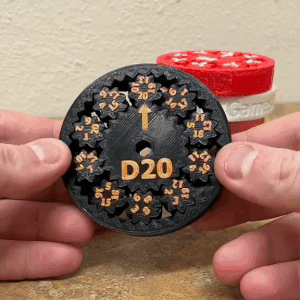
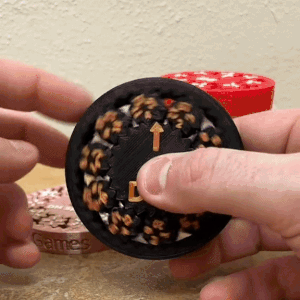
fidget spinner dice | source
#talos gifs#stim gifs#stim#dice#dnd dice#d20#fidget spinners#body stim#irl hands#mechanical#plastic#black#brown#gold#gears
343 notes
·
View notes
Text
Hey gang I'm gonna very briefly open requests, I got told a teacher that I should stop working so if anyone has anything they'd like me to draw send it NOW
(what I'll draw will be in tags, also please send through asks)
#the mechanisms#the magnus archives#rocky horror picture show#dice shame#dirk gently's holistic detective agency#malevolent#sonic the hedgehog#ocs#stick to these catagories please and thank you friends
11 notes
·
View notes